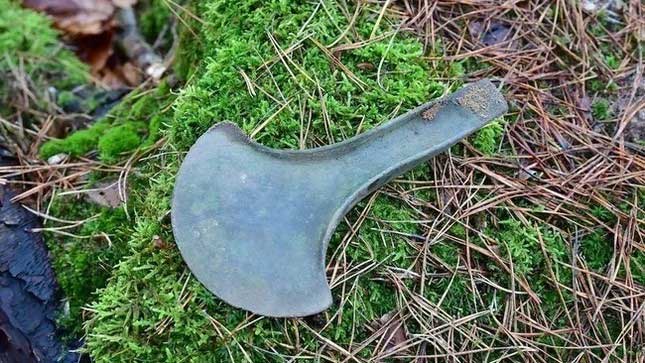Five axes recently found in Poland date back 3,500 years ago and may have been used as tools for sacrificial purposes.

A metal detector expert in Poland found five Bronze Age axes buried in a forest. Archaeologists believe that these artifacts may have been used to cut wood or for worship purposes.
 One of five axes with a semicircular blade found in a forest in Poland
One of five axes with a semicircular blade found in a forest in Poland
Denis Konkol was exploring a wooded area in Kociewie, a region in northern Poland, when his metal detector beeped. According to the Miami Herald, after digging about 20 to 30cm deep into the ground, he unearthed these metal tools.
Archaeologists analyzed these five axes and estimated that they were about 3,500 years old.
“These items are quite rare in lands like this,” said Igor Strzok, conservator of Pomeranian provincial monuments.

Piotr Klimaszewski, head of the Department of Archaeological Monuments, described the artifacts as “Tautušiai-type axes” – a tool with a tapered neck and semicircular blade associated with Tautušiai, a village in Lithuania. The tools could have been used to chop wood or fight, officials wrote in the Facebook post.

However, it is possible that these axes were used as part of “cult practices” or “sacrifice” , Klimaszewski adds. In addition to these tools, archaeologists also found a 2,000-year-old fibula (a small brooch) – used to tie clothes, according to the Miami Herald.
The researchers are not sure how the artifacts turned up in the forest, adding that more research is needed to fully understand their history. But the team was truly surprised at the excellent state of preservation of these axes.






